Tibet Life
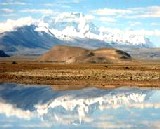 Situated on a mountainous plateau in western China, the autonomous region of Tibet, known as 'Xizang' in Mandarin
Chinese, is often referred to as the "Shangri La", or 'the roof of the world'. Tibet presents an amazing,
and mysterious civilization to outsiders, offering such spectacles as natural, snow-capped peaks of Mount Everest,
Tibetan Buddhist architecture such as the Potala Palace in Lhasa, the Jokhang Temple, several sacred Buddhist places,
Tibetan festivals and customs, and much more.
Situated on a mountainous plateau in western China, the autonomous region of Tibet, known as 'Xizang' in Mandarin
Chinese, is often referred to as the "Shangri La", or 'the roof of the world'. Tibet presents an amazing,
and mysterious civilization to outsiders, offering such spectacles as natural, snow-capped peaks of Mount Everest,
Tibetan Buddhist architecture such as the Potala Palace in Lhasa, the Jokhang Temple, several sacred Buddhist places,
Tibetan festivals and customs, and much more.

In the past, farmers often settled in small villages with barley as their main crop. While roaming nomads earned their
living by herding yaks and sheep, those Tibetans dwelling within cities made a living as craftsmen. However, presently
Tibetan society is witnessing an influx of people into the field of business.
Since China's Family Planning Program is not enforced among the Tibetan people, the Tibetan population continues to
expand. According to a census conducted in 2000, there are 2,616,300 people in Tibet, with Tibetans totaling 2,411,100
or 92.2% of the current regional population. The census also revealed that Tibetan's average lifespan has increased to
68 due to improved standards of living and greater access to medical services. Illiteracy has additionally decreased
to 850,700.
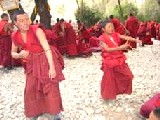
With a way of life that stayed the same for centuries, Tibet is so high up and far away that few visitors ever reached
its borders until last century. Interrupting the ancient peace of the Buddhist mountain kingdom came first the British and
Indian traders. Coupled with their interest was that of China and Russia who asserted their influence and sovereignty over
the region. Now, as an autonomous province of China, religious Tibet has entered the modern world, and is trying with
the help of its allies to keep apace with developments of the rest of the country.
Most Tibetans are devout Buddhists while a few believe in the old Bon. Islam and Catholicism also have a few followers
in Lhasa and Yanjing. In its early years, Tibetan Buddhism was greatly influenced by Indian Buddhism, but after years of
evolution, Tibetan Buddhism has developed its own distinctive qualities and practices. A well-known example is the belief
that there is a living Buddha, who is the reincarnation of the first.
Dalai Lama & Panchen Lama
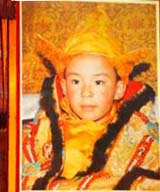
The Dalai Lama and the Panchen Lama, both of the Gelugpa lineage of Tibetan Buddhism, are at the top of the lama
hierarchy in old Tibet. The title "Dalai Lama", meaning Ocean Of Wisdom, was first conferred on Sonam Gyatso by the
Mongol King Altan Khan who was converted to Tibetan Buddhism in 1578. Sonam Gyatso is the third Dalai Lama since
his two predecessors were posthumously conferred as the first and the second Dalai Lamas.
The practice of conferring the title "Dalai Lama" became established when Emperor Shunzhi of the Qing Dynasty bestowed
the same title on the Great Fifth (the fifth Dalai Lama, Ngawang Losang Gyatso) in 1653. The Dalai Lama is considered the
incarnation of Chenrezi (Avalokiteshvarra), Bodhisattva of Compassion and the patron deity of Tibet by Tibetan people.
There have been fourteen Dalai Lamas, each one considered a reincarnation of the former.
The title of Panchen, Great Scholar, was conferred on Lobsang Choekyi Gyaltsen by Qosot Mongol Gushri Khan in 1645.
Lobsang Choekyi Gyaltsen was the fourth Panchen Lama and the three abbots before him were conferred the title posthumously.
In 1713, Emperor Kangxi conferred the title of Panchen Erdeni (Erdeni, in Manchurian, means treasure) to the fifth Panchen
Lama. The Panchen Lama is esteemed as the incarnation of Amitayus, Buddha of Infinite Light. Tashilungpo Monastery is the
traditional seat of the Panchen Lamas. Till now there have been eleven Panchen Lamas. The eleventh Panchen, identified in
1995, now lives in China.
Monks in Drepung, Tibet
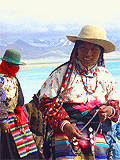
This distinct form of Tibetan Buddhism, also called Lamaism, developed during the 10th century and was firmly
established from this time onwards. As the years passed and Tibetan Buddhism spread into neighboring provinces and
countries, a number of different sects evolved which were to develop both political and religious influence. The
following five are the most influential.
Nyingmapa
Nyingmapa, meaning "old", is the oldest Buddhist sect. The Nyingmapa lamas wear red robes and hats, thus this sect
is additionally referred to as the Red Sect. It has a loose organization and focuses on mantra practice. Its lamas
may marry and usually live in small groups. This sect retains more of the aspects of the Bon religion than the
other sects. Nyingmapa lamas believe that the mind is pure, and that by cultivating one's being in such a way as
to reject all outside influences, it is possible to become one with Buddha. This sect has a greater number of
deities than the other four. The major Nyingmapa monasteries are the Mindroling Monastery and the Dorje Drak
Monastery. The former is particularly renowned for its collection of Tibetan calligraphy. Kahdampa

The Kahdampa sect believes that Buddha's acts and teachings should be the doctrines of cultivation. It is based
on the teachings of Atisha, who arrived from India in 1042. The tradition stresses scriptures and discipline,
emphasizing that Tantra can be imparted to only a select few. Kahdampa preaches samsara and retribution. The
main monastery is the Nechung Monastery.
Kagyupa
The Kagyupa sect originated by two great teachers: Marpa and Milarepa. Kagyupa means "to teach orally" and focuses
on Tantric teaching. Since Marpa and Milarepa wore white robes, this sect is also called the White sect. Kagyupa
doctrines are unique and stress a combination between quasi-qigong and Buddhist satori practices. It also advocates
asceticism and obedience as the source of enlightenment. An important contribution of Kagyupa was the creation of
tulku (reincarnating lamas) system, in which an existing lama can show evidence of his prior incarnations. Kagyupa's
principal shrine is the Tsurphu Monastery, the traditional seat of the Karmapa lama.
Sakyapa
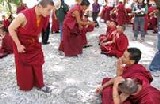
The Sakyapa sect dates from 1073 and was founded at the Sakya Monastery after which it was named. Due to the
beautifully painted red, white, and black striped on the monastery, the order became known colloquially as the
Colorful Sect. Sakyapa's doctrines persuade people to do good deeds in order to gain a good incarnation in their
next samsara and to discard all temporal desires to ensure relief from pain. Gelugpa
The Gelugpa sect is the order of Dalai Lama and Panchen Lama and is also called the Yellow Sect since they wear yellow hats. It was founded by
Tsong Khapa, a great Buddhist reformer, in 1407. It absorbed Kahdampa and carried on Atisha's tradition. It stresses strict discipline
and the study of scriptures. Its successful reform made it dominant in Tibet after the 17th century and left other sects to play a minor
role. Its six main monasteries are the Ganden Monastery, Ta'er Monastery, Drepung Monastery, Labrang Monastery, Sera Monastery and
Tashilhunpo Monastery.
Tibet lies on the Qinghai Tibet Plateau of China. Known as the world's highest region, the Tibetan region averages more than 4,500
meters (16,000 feet) above sea level with its highest peak claiming 8.846.27 meters (29,029 ft) above sea level. This peak known as
Everest Peak is also the highest peak in the world.
Tibet is to the south of Xinjiang Uygur Autonomous Region and Qinghai Province, to the west of Sichuan, to the northwest of Yunnan
and to the north of India and Nepal. Its population of 2.3 million people consists of a variety of ethnic groups including Tibetan,
Han, Monba and Lhota. Its capital city is Lhasa.
Tibet's Physical Features primarily consists of a plateau, known as "the roof of the world"; a small area in the southeast descends
to the Brahmaputra River Valley; north of the Gangdise Range and south of the Kunlun Range is the vast Northern Tibet Plateau with
hills, basins, lakes, and snow-covered peaks: the southern valleys between the Gangdise and the Himalayas are Tibet's principal farming
and pastoral lands; in the east is a region of parallel mountains and valleys, which are the northern half of the Hengduan Mountains.
The Himalaya Mountains in southern Tibet have an average elevation of 6,000 meters; in the north are the Kunlun and Tanggula Ranges;
in the central southwest lies the Gangdise Range, the Hengduan Mountains are to the immediate east of the Nyainqentanglha Range.
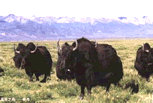 The Tibetan economy is dominated by subsistence agriculture. Due to limited arable land, livestock farming is the primary occupation
mainly on the Tibetan Plateau, among them are sheep, cattle, goats, camels, yaks and horses. However, the main crops grown are barley,
wheat, buckwheat, rye, potatoes and assorted fruits and vegetables.
The Tibetan economy is dominated by subsistence agriculture. Due to limited arable land, livestock farming is the primary occupation
mainly on the Tibetan Plateau, among them are sheep, cattle, goats, camels, yaks and horses. However, the main crops grown are barley,
wheat, buckwheat, rye, potatoes and assorted fruits and vegetables.
Tibet is also rich in water, geothermal, solar, and wind energy. It produces approximately 200 million kw of natural hydro-energy
annually (about 30% of the nation's total). It has 354.8 billion cubic meters of surface water resources (13.5% of the nation's total);
and 330 billion cubic meters of glacial water resources. Tibet has 56.59 million kilowatt exploitable hydro-energy resources, (15% of
the nation's total). Tibet also leads China in geothermal energy production. The Yangbajain geothermal field in Damxung County, Lhasa,
is China's largest high temperature steam geothermal field, and also one of the largest geothermal fields in the world. Since the
1980s Tibet has launched a series of projects to encourage the wider use of solar energy. The region's location on a plateau some
4,000 meters above sea level puts it closer to the sun than any other place on earth, and therefore, it has an average of 3,400 hours
of sunshine annually. Tibet is China's leading source of solar power, with considerable potential for further development in this
industry.
Tibet is a giant plant kingdom with more than 5,000 species of high grade plants. It is also one of China's largest forest areas
with preserved intact primeval forests. Almost all known, main plant species from tropical to frigid zones of the northern hemisphere
can be found here.

In recent years, due to the increased interest in Tibetan Buddhism tourism has become an increasingly important sector, and is
actively promoted by the authorities. The Tibetan economy is heavily subsidized by the Central government and government cadres
received the second highest salaries in China. Tourism brings in the most income from the sale of handicrafts. These include
Tibetan hats, jewelry (silver and gold), wooden items, clothing, quilts, fabrics, Tibetan rugs and carpets.
Tibet's GDP grew 14 percent to a total of 25.1 billion RMB in 2005. In the first half of 2006, the economy grew by 12.5 percent.
The rapid pace of economic growth can be credited to the financial support given by both the central and local government to major
infrastructure projects in the region. The region's staple exports are traditional items such as goat's wool, serge, herbal medicines
and carpets. Imports are mainly electrical goods, steel products, vehicles, pesticides and textiles.
The climate and altitude are extremes in Tibet. Temperature variation between day and night is huge. Be careful not to catch cold,
because of
Mountain Sickness, which could possibly be fatal in Tibet. One should prepare an aid kit before arriving with necessities to treat the
following: diarrhea, giardiasis, hepatitis, respiratory tract infections (colds, influenza and bronchitis). Bring along oxygen tanks
to aid breathing in higher elevations. Medicine can be obtained from pharmacies beforehand, most of them on Yuthok Lu Road in Lhasa.
The sun is much stronger at this elevation because there is little atmosphere to filter its rays, and is more likely to injure
travelers' skin and eyes. Sunscreen, sunglasses and a hat are recommended. Moreover, the boiling point of water is somewhat lower
in Tibet. Therefore it is better to boil water for a longer period of time. Drinking water should be purified with iodine or other
purification tablets before consumption to prevent intestinal discomfort.
Packs of wild dogs roaming around monasteries and villages are common and can be a potential threat. Get a rabies vaccination
(human diploid cell vaccine or purified chick embryo culture vaccine) in advance and stay away from them. Visitors to remote areas
may see wild animals, such as wild yaks, Tibetan antelopes and such. For safety's sake it's advised to keep one's distance.
|